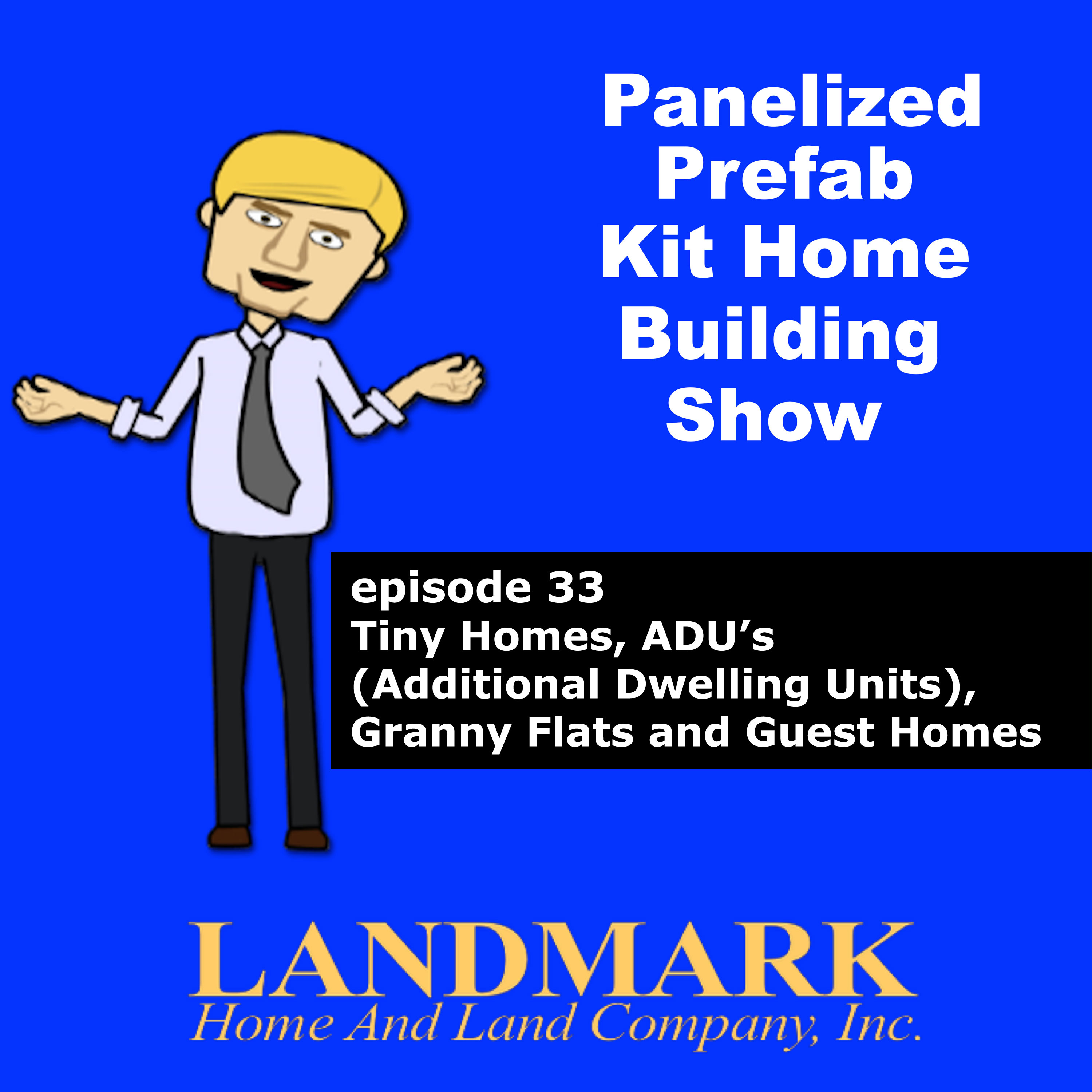Tiny Homes, ADUs (Additional Dwelling Units), Granny Flats and Guest Homes

b'
\\nShow Notes:
\\nIn this episode we cover Tiny homes, what they are and why they’are becoming so popular.\\xa0 \\xa0What is the difference between ADU’s Additional Dwelling\\xa0Units, guesthouse, and granny flats.
\\nTranscript:
\\nInterviewer: Hello everybody. It\\u2019s Episode 33 of the Panelized Prefab Kit Home Building Show. With me in studio is the President and Founder of Landmark Home and Land Company, a company which has been helping people build their new homes where they want exactly as they want across the nation and worldwide since 1993, Steve Tuma. Steve, how are you doing, buddy?
\\nSteve Landmark: I am doing great.
\\nInterviewer: Fantastic.
\\nSteve Landmark: It\\u2019s always a good day in Landmark Home and Land Company Land, helping people come up with some cool ideas on how to get their home.
\\nInterviewer: So Steve, today I want to bring up a subject that seems to be on the minds of a whole lot of people on social media, in magazines, at coffee houses, and that\\u2019s a subject of tiny houses. People seem to be downsizing their lives all over the place, their cars, their stuff really, and now this phenomenon known as the tiny house. So if you will, tell our listeners what the heck is a tiny house?
\\nSteve Landmark: Well, tiny home is kind of an interesting concept that evolved. I think after the economic crash in \\u201808 and \\u201809 where people are building big houses and then suddenly financially, the world had a huge amount of problems. So suddenly go the other way. Instead of build a big McMansion, let\\u2019s go build a tiny home. So the concept being that hey, do we really need 8,000 square feet, 14 garages, 12 bedrooms, things like that? And what\\u2019s the reality of what you need? So the kind of the pendulum swung the other way to like, \\u201cHey, let\\u2019s live in 200-square-foot homes.
\\nInterviewer: Right.
\\nSteve Landmark: So my belief and from what I saw is that the concept came that there are a lot of people that weren\\u2019t able to afford a home for financial reasons, loss of job, variety of different situations that came up. So the concept came up of, \\u201cHey, I\\u2019ll go move into the parents\\u2019 or my friend\\u2019s yard. I\\u2019ll just put a little house on a trailer because I could get around zoning and building codes.\\u201d As long as the trailer has a license, you can live in it just like if you had a motor home in your driveway.
\\nSo what happens is people came up and started developing these tiny homes. It kind of sounded cool. It\\u2019s in Vogue. It\\u2019s like, \\u201cHey, there are financial issues. Let\\u2019s go the other way. Let\\u2019s build a little house. I\\u2019ll live in 200 or 300 square feet.\\u201d So what ends up happening with that is it sounds kind of cool but imagine all your clothes in the close and everything and you\\u2019re just cooking this killer garlic dinner and it gets through your whole 200-square-foot home and for the next week your clothes smell like garlic? So there is the neat idea behind it and then there\\u2019s OK, as it settles and people get into it, the reality of this, of you can\\u2019t really put a husband and wife, two kids, and a dog in 200 square feet. So sometimes these homes get a little bit bigger. So I think now they kind of consider tiny homes less than 800 or 1000 square feet.
\\nSo in that evolution of this where they started having a lot of people putting these secondary houses like on trailers on their backyard, people are like, \\u201cHey, wait a second. Neighbors are looking over the fence saying, \\u201cIs there a septic in that tiny home? Where is the water? Why suddenly are there 12 people at this house?\\u201d
\\nSo the Zoning and Building Departments and communities kind of started pushing the word they have to regulate it. So sometimes what it has evolved to is where you have some communities will allow smaller homes. So if you check with building departments, a lot of them will have a minimum of 900 or 1000 square feet.
\\nInterviewer: Right.
\\nSteve Landmark: So in a lot of these places,'